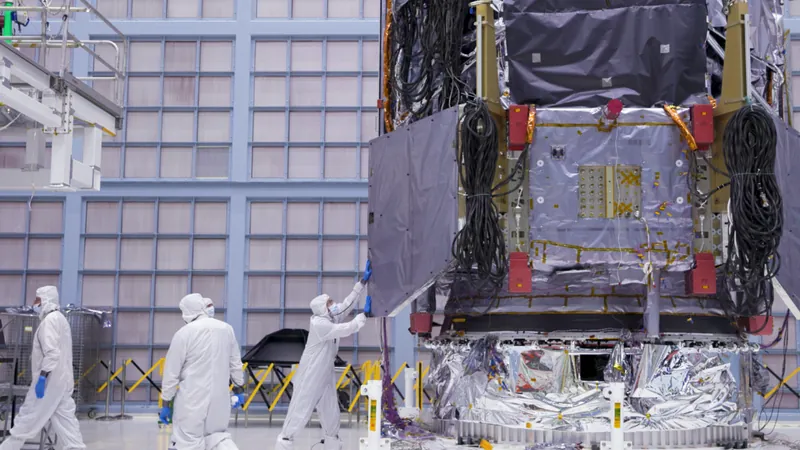
NASA's Roman Space Telescope Gets a Game-Changing Sunblock Installed!
2025-08-11
Author: Jia
A Major Milestone for the Roman Space Telescope
In a groundbreaking achievement, engineers at NASA's Goddard Space Flight Center in Maryland have successfully installed two state-of-the-art sunshields on the highly anticipated Nancy Grace Roman Space Telescope. This installation marks a pivotal moment in the telescope’s journey to unravel the universe's deepest mysteries.
What Makes These Shields So Special?
Matthew Stephens, an aerospace engineer at NASA Goddard, likened the new sunshields to an "extremely strong sunblock" for the telescope's delicate instruments. These shields are essential in protecting the telescope from the overwhelming heat and light of the sun, which could otherwise drown out faint signals from the vast cosmos.
Funding Fears Loom Over the Future
While the Roman Space Telescope is on track for a launch by May 2027, with hopes for an earlier date as soon as fall 2026, recent federal budget proposals threaten to upend this timeline. With former President Trump’s fiscal year 2026 budget suggesting drastic cuts to NASA funding, key science missions, including the Roman telescope, face potential delays or even cancellation. Scientists emphasize that these cuts could jeopardize decades of planning and investment.
The Engineering Marvel Behind the Shields
The two newly added panels are part of the Lower Instrument Sun Shade and enhance the telescope's existing Solar Array Sun Shield and Deployable Aperture Cover. Together, they form a robust barrier to keep Roman's instruments cool while it gazes into the infrared universe.
Each sunshield panel measures about 7 by 7 feet and is ingeniously designed as a lightweight yet rigid structure, minimizing heat transfer from the sun's scorching side—where temperatures can soar to 216°F—to the shaded side, which can drop to a frigid -211°F. These panels feature a honeycomb-like core wrapped in a specialized polymer blanket, with 17 layers on the sun-facing side to regulate temperature effectively.
Road Ahead: Testing and Integration in Store
Now that the sunshields are installed, this segment of the telescope will undergo rigorous testing, including a demanding 70-day thermal vacuum test to replicate the extreme conditions of space. Following these evaluations, engineers will remove the sunshield briefly to assemble the inner and outer segments—a crucial step toward completing the observatory.
The Clock is Ticking!
Despite the looming funding uncertainties, scientists continue to work tirelessly on Roman, aiming to ensure its launch proceeds as planned. With every milestone, the excitement builds, and the world is watching as this remarkable telescope inches closer to revealing the cosmos’ hidden secrets.




 Brasil (PT)
Brasil (PT)
 Canada (EN)
Canada (EN)
 Chile (ES)
Chile (ES)
 Česko (CS)
Česko (CS)
 대한민국 (KO)
대한민국 (KO)
 España (ES)
España (ES)
 France (FR)
France (FR)
 Hong Kong (EN)
Hong Kong (EN)
 Italia (IT)
Italia (IT)
 日本 (JA)
日本 (JA)
 Magyarország (HU)
Magyarország (HU)
 Norge (NO)
Norge (NO)
 Polska (PL)
Polska (PL)
 Schweiz (DE)
Schweiz (DE)
 Singapore (EN)
Singapore (EN)
 Sverige (SV)
Sverige (SV)
 Suomi (FI)
Suomi (FI)
 Türkiye (TR)
Türkiye (TR)
 الإمارات العربية المتحدة (AR)
الإمارات العربية المتحدة (AR)